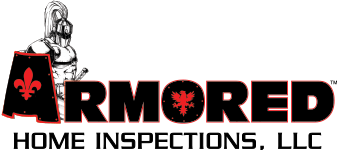What We Do
Mold & Indoor Air Quality
In some cases, mold in the home can be a serious problem. It can adversely affect the Indoor Air Quality within your home and decrease the quality of life for those living there. Armored conducts assessments and testing for mold as well as many other conditions that may be keeping you from having a healthy home.
Armored’s Certified Mold Inspector will conduct a visual assessment of your property to identify any potential moisture problems as well as any visible mold growth. When conditions warrant further testing, we will perform air and bulk mold sampling which is sent to a laboratory for analysis. We’ll help provide you with information about remedial action and steps to prevent mold and moisture problems from re-occurring. Contact us to learn more about this service or to arrange for a mold assessment or test.

Learn More
What is Mold?
What most people do not realize is that mold has been around since the beginning of days. Mold is a living organism, specifically a fungus. It has a purpose and a function in the breaking down of cellulose and organic matter. Molds produce microscopic cells called “spores” which spread easily through the air. Live spores act like seeds, forming new mold growths (colonies) when they find the right conditions. Once the right condition exists to support a colony, mold spores go to work reproducing. This is when humans have problems. Excessive mold growth/spores cause various reactions in humans. It is also very difficult, if not impossible to predict what health effects may result due to Mold exposure.

How to Tell if it is a
Mold Problems
The first step in determining the presence of mold is to investigate the most probable areas. Where is mold commonly found? Damp or potentially damp areas are great places to support mold life. These areas include, but are not limited to:
- Basements
- Attics
- Bathrooms / Kitchens
- Closets
- Any dark and potentially damp area
If you see mold or if there is an earthy or musty smell, you should assume a mold problem exists. Other clues are signs of excess moisture or the worsening of allergy-like symptoms:
- Look for visible mold growth (may appear cottony, velvety, granular, or leathery and have varied colors of white, gray, brown, black, yellow, green). Mold often appears as discoloration, staining, or fuzzy growth on the surface of building materials or furnishings. When mold is visible, testing is not recommended.
- Look for signs of excess moisture or water damage. Look for water leaks, standing water, water stains, condensation problems. For example, do you see any watermarks or discoloration on walls, ceilings, carpet, woodwork or other building materials?
- Search areas with noticeable mold odors.
- Search behind and underneath materials (carpet and pad, wallpaper, vinyl flooring, sink cabinets), furniture, or stored items (especially things placed near outside walls or on cold floors). Sometimes destructive techniques may be needed to inspect and clean enclosed spaces where mold and moisture are hidden; for example, opening up a wall cavity.
Not sure whether or not mold exists in your home? Armored’s trained professionals have experience detecting mold. We can also identify where conditions are favorable for mold growth and recommend ways to make them less desirable.
Symptoms of
Mold Reaction
The most common health problems caused by indoor mold are allergy-like symptoms. Although other and more serious problems can occur, people exposed to mold commonly report problems such as;
- Sinus and nasal congestion
- Cough
- Wheezing or breathing difficulties
- Sore throat
- Skin and eye irritation
- Upper respiratory infections (including sinus)
Are risk factors greater for some than others? Yes, the following groups may be at an increased risk for adverse symptoms from mold exposure.
- Young children
- Individuals with weakened immune systems (HIV, Chemotherapy patients, organ transplant recipients)
- Elderly adults
- Individuals with respiratory conditions (allergies and asthma)
Some molds species can produce a chemical compound called “Mycotoxins” although they may not always do so. Molds that are able to produce toxins are common. In some circumstances, the toxins produced by indoor mold may cause health problems. However, all indoor mold growth is potentially harmful and should be removed promptly no matter what types of mold is present or whether it can produce toxins.
When Should I
Test For Mold
In most cases, if visible mold growth is present, sampling is unnecessary. You should simply assume there is a problem whenever you see mold or smell mold odors. However, sometimes mold may not always be readily detectable, it may be hidden and difficult to locate. If you are looking for complete assurance, we recommend environmental sampling. We do not recommend testing for mold yourself. Sampling for mold should be conducted by professionals who have specific experience in designing mold sampling protocols, sampling methods, and interpreting results. A combination of air (outdoor and indoor air samples) and bulk (material) samples may help determine the extent of contamination and where cleaning is needed.
Whether you simply have more questions or would like the professional testing and advice of Armored’s experienced staff, we are here to help. Feel free to Contact us anytime.
Proudly Affiliated
Ready To Get Started?
We promise to meet or exceed your expectations each and every time you need us. Whether you’re seeking a certified inspector to evaluate your home, an environmental test to protect your family, or the sound advice of a qualified professional, our knowledgeable Armored staff is here to serve you.










